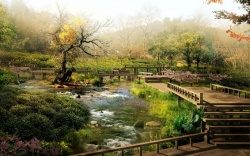Difference between revisions of "Kamakura"
| Line 3: | Line 3: | ||
| − | [[Kamakura]] ([[鎌倉市]] [[Kamakura-shi]]?) is a city located in [[Kanagawa]] Prefecture, [[Japan]], about 50 kilometres (31 {{Wiki|miles}}) south-south-west of {{Wiki|Tokyo}}. Although [[Kamakura]] proper is today rather small, it is often described in history [[books]] as a former {{Wiki|de facto}} capital of [[Japan]] as the seat of the {{Wiki|Shogunate}} and of the Regency during the [[Kamakura Period]]. [[Kamakura]] was designated as a city on November 3, 1939. | + | [[Kamakura]] ([[鎌倉市]] [[Kamakura-shi]]?) is a city located in [[Kanagawa]] Prefecture, [[Japan]], about 50 kilometres (31 {{Wiki|miles}}) south-south-west of |
| + | |||
| + | {{Wiki|Tokyo}}. Although [[Kamakura]] proper is today rather small, it is often described in history [[books]] as a former {{Wiki|de facto}} capital of | ||
| + | |||
| + | [[Japan]] as the seat of the {{Wiki|Shogunate}} and of the Regency during the [[Kamakura Period]]. [[Kamakura]] was designated as a city on November 3, 1939. | ||
As of June 1, 2012, the {{Wiki|modern}} city has an estimated population of 174,412 and a population density of 4,400 persons per km². The total area is 39.60 km². | As of June 1, 2012, the {{Wiki|modern}} city has an estimated population of 174,412 and a population density of 4,400 persons per km². The total area is 39.60 km². | ||
| + | |||
[[Kamakura]] has a beach which, in combination with its [[temples]] and proximity to [[Tokyo]], makes it a popular tourist destination. | [[Kamakura]] has a beach which, in combination with its [[temples]] and proximity to [[Tokyo]], makes it a popular tourist destination. | ||
| − | Important period of [[Japanese]] history (1185–1335) when the rise of the Shōguns (q.v.) made [[Wikipedia:Kamakura, Kanagawa|Kamakura]], a city on the sea to the [[south]] of [[Tokyo]], a second capital, | + | Important period of [[Japanese]] history (1185–1335) when the rise of the [[Shōguns]] (q.v.) made [[Wikipedia:Kamakura, Kanagawa|Kamakura]], a city on the sea |
| + | |||
| + | to the [[south]] of [[Tokyo]], a second capital, | ||
| + | |||
| + | and drew [[teachers]] and {{Wiki|artists}} from the seat of the [[Emperor]], {{Wiki|Kyoto}}. Here Bst Schools from [[China]], notably [[Rinzai Zen]], found a | ||
| − | + | new home. Here was the birthplace of | |
| − | [[Bushidō]], and the rise in importance of Jūdō and Kendō. [[Engakuji]] (q.v.) was founded here in 1282, and the [[Daibutsu]] (q.v.) erected in 1252. | + | [[Bushidō]], and the rise in importance of [[Jūdō]] and Kendō. [[Engakuji]] (q.v.) was founded here in 1282, and the [[Daibutsu]] (q.v.) erected in 1252. |
{{W}} | {{W}} | ||
[[Category:Japan]] | [[Category:Japan]] | ||
Revision as of 09:28, 23 November 2020
Kamakura (鎌倉市 Kamakura-shi?) is a city located in Kanagawa Prefecture, Japan, about 50 kilometres (31 miles) south-south-west of
Tokyo. Although Kamakura proper is today rather small, it is often described in history books as a former de facto capital of
Japan as the seat of the Shogunate and of the Regency during the Kamakura Period. Kamakura was designated as a city on November 3, 1939.
As of June 1, 2012, the modern city has an estimated population of 174,412 and a population density of 4,400 persons per km². The total area is 39.60 km².
Kamakura has a beach which, in combination with its temples and proximity to Tokyo, makes it a popular tourist destination.
Important period of Japanese history (1185–1335) when the rise of the Shōguns (q.v.) made Kamakura, a city on the sea
to the south of Tokyo, a second capital,
and drew teachers and artists from the seat of the Emperor, Kyoto. Here Bst Schools from China, notably Rinzai Zen, found a
new home. Here was the birthplace of
Bushidō, and the rise in importance of Jūdō and Kendō. Engakuji (q.v.) was founded here in 1282, and the Daibutsu (q.v.) erected in 1252.
